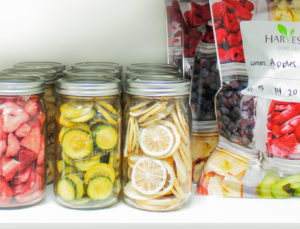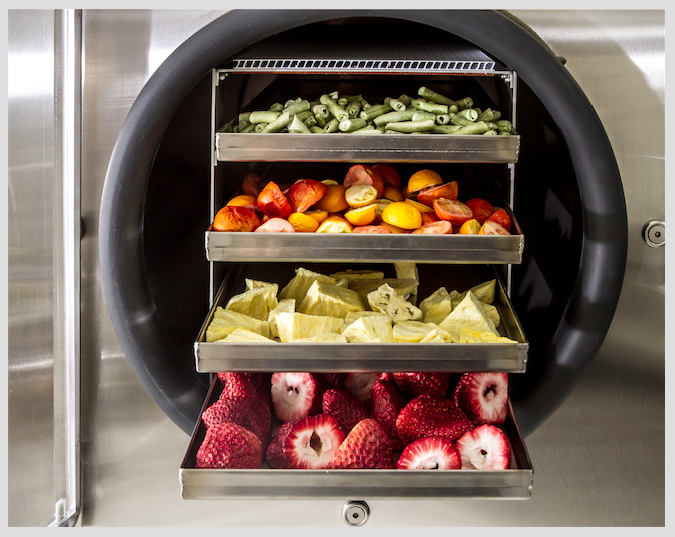Your Cart is Empty
Call, Text or Chat Mon-Friday 10AM-5PM CST : 1-844-WILDOAK
Menu
-
- Deals & Promos
- Homesteading
- Living Off The Grid
- Off Grid Toilet
- Composting Toilets
- Incinerating Toilet
- Chicken Coops
- Greenhouses
- DIY Shed Kits
- Barndominium Kit
- Garage Kits
- Poultry Processing
- Dog Kennels
- BeeKeeping
- EMP & Signal Protection
- Emergency Food Kits
- Freeze Dryers
- Solar Generators, Panels and Batteries
- Solar Fridge & Freezers
- Propane Wall Heater
- Water Filtration
- Coolers and Cooking
- Gazebos
- Portable Sauna
- Camping Cot
- Hunting Blind
- Canvas Tents
- Prepping
- Overlanding Gear
- Composting Toilets
- Solar Generators
- Brands
- Chicken Coop Brands
- Composting Toilet Brands
- Solar Brands
- Food Storage Brands
- Freeze Dryer Brands
- Water Filtration Brands
- Incinerating Toilet
- Dry Flush Toilet Brands
- Waterless Toilet Brands
- Heater Brands
- EMP Shield Brands
- Tent Brands
- Cot Brands
- Cooler Brands
- Stove & Grill Brands
- Dog Kennels
- Greenhouse & Gazebo Brands
- Portable Saunas
- DIY Shed Kits
- About Us
- Resource Center
- The Ultimate Prepper & Emergency Survival Blog - Includes Free eBook
- Beginners Guide to Living off The Grid - Includes Free eBook
- Building Your Own Emergency Food Supply
- Best Survival Food to Be Prepared for Anything
- Berkey Lab Tests & Certifications
- Federal Solar Tax Credit - What You Need to Know
- BLOG
-
- 1-844-945-3625
- Login

Call, Text or Chat Mon-Friday 10AM-5PM CST : 1-844-WILDOAK
Can All Foods Be Freeze Dried? The Freeze-Dried Food Guide
by Patricia Turla 6 min read
Freeze drying has become a popular method for preserving food since it extends shelf life while maintaining nutrition and flavor. Thanks to dryers like the Harvest Right Freeze Dryer, camping meals to military rations and healthy snacks can be freeze-dried and brought anywhere!
But can all foods be freeze-dried? Explore the Limitations of Freeze-Drying Certain Foods, understand which foods can be freeze-dried, and explain why some foods can’t use this preservation method.
The Freeze Drying Process

Freeze drying, also known as lyophilization, is a food preservation method that involves freezing fresh food and then reducing the surrounding pressure to allow the frozen water in the food to sublimate directly from the solid phase to the gas phase. Such a method removes moisture from the food, resulting in lightweight, dry foods for long-term storage without refrigeration.
The Benefits of Freeze-Dried Food
The following are the numerous benefits of freezing food:
Long Shelf Life
Unlike your typical refrigerated, frozen, or canned food, freeze-dried foods have an extended shelf life, often lasting 20 to 25 years if stored properly in an airtight container. Hence, freeze-drying works perfect for the following:
-
Emergency Preparedness: When disaster strikes, freeze-dried foods come to the rescue. Be it a natural disaster, an unexpected power outage, or even an extended lockdown, rest assured that you have long-lasting meals at your fingertips.
-
Camping Trips: Freeze-dried everyday meals are easy to pack and carry, making them perfect for hiking, backpacking, and camping. Plus, these dried foods come in a variety of flavors that you can enjoy while out in the wild.
-
Space Exploration: In space, where fresh food isn’t an option, freeze-dried meals ensure astronauts have access to balanced, appetizing meals.
Health Benefits
Different from other preservation methods that involve heat, freeze drying ensures the nutrients remain intact. Additionally, freeze-dried foods are free from added preservatives and artificial additives, making them a natural and wholesome option. The reduced moisture content also helps to inhibit bacterial growth and mold, ensuring the food remains safe and fresh.
Minimal Food Waste
By freeze-drying fresh produce and other perishable items, you can reduce food waste and make the most of seasonal produce. Freeze drying allows you to preserve food that might otherwise spoil. It also offers an efficient way to preserve leftovers and excess produce, ensuring that even bumper crops do not go to waste. The convenience and portability of freeze-dried foods, which are lightweight and easy to store, make them more likely to be used rather than forgotten and wasted.
Steps to Freeze Dry Food

-
Pre-Freezing: Foods are frozen at very low temperatures, usually between -30°F and -50°F. This step ensures that the water content in the food turns into ice.
-
Primary Drying (Sublimation): The frozen food is placed in a freeze dryer, which contains a vacuum chamber. The pressure is lowered, causing the ice to sublimate (turn from solid to vapor) without passing through the liquid phase.
-
Secondary Drying (Desorption): Any remaining water molecules are removed at slightly higher temperatures to ensure the food is completely dry.
-
Packaging: The freeze-dried food is then sealed in airtight,vacuum-sealed containers to prevent moisture from getting back in, ensuring a long shelf life.
Foods That Can Be Freeze Dried
Fruits and Vegetables
Fruits and vegetables are excellent candidates for freeze-drying. Having a high water content makes the process efficient, and the resulting products retain most of the nutritional value, color, and flavor. Popular freeze-dried fruits include strawberries, apples, bananas, and blueberries, while vegetables like green beans, peas, corn, and broccoli also freeze-dry well.
Dairy Products
Milk, cheese, and yogurt can be freeze dried, resulting in products that are convenient and have a long shelf life. Freeze-dried dairy retains much of its nutritional content and can be reconstituted with water or used as is in various recipes.
Meats and Seafood
Aside from seafood, you can also freeze dry raw meat, such as beef, chicken, and pork. Freeze-dried meats are lightweight, making them ideal for camping trips and emergency food supplies. Likewise, they can be rehydrated and cooked or used in soups and stews.
Herbs and Spices
Herbs like parsley, basil, and cilantro, as well as spices, can be freeze-dried to preserve their flavor and potency. Freeze-dried herbs and spices can be a great addition to any pantry, providing a fresh taste without the need for refrigeration.
Coffee and Tea
Freeze-dried coffee and tea are common products that maintain their flavor and aroma. The freeze drying process is particularly an excellent method for preserving the delicate flavors of coffee beans and tea leaves.
Sweets and Snacks
Sweet treats like candy, marshmallows, and even ice cream can be freeze-dried. Freeze-dried sweets maintain their original flavor and can be enjoyed as lightweight snacks with a satisfying crunch.
Foods That Can't Be Freeze Dried
While many foods can be freeze-dried, there are some that can't undergo this preservation method, including the following:
1. High-Fat Foods
Foods with a high oil content, such as peanut butter and certain dairy products, don't freeze-dry well. The oil doesn't evaporate like water, making it difficult to remove moisture completely, resulting in a product that can spoil quickly.
Examples: Butter, cheese, avocados.
2. Fresh Herbs with High Oil Content
While many herbs freeze-dry beautifully, those with a high oil content struggle to undergo the process effectively. The oils prevent complete moisture removal, leading to poor preservation.
Examples: Basil, chives, cilantro.
3. Whole Eggs
Freeze-drying whole eggs can be problematic due to their high-fat content and structure. While egg powder can be made through freeze-drying, the process is complex and requires special handling.
Examples: Raw whole eggs, scrambled eggs.
4. Soft Cheeses
Soft cheeses contain high levels of moisture and fat, which makes them difficult to freeze-dry. The texture changes unfavorably, and they don't rehydrate well.
Examples: Brie, cream cheese, ricotta.
5. High-Sugar Foods
Foods with high sugar content can turn into a sticky mess during freeze-drying. The sugar creates a syrupy texture that is difficult to freeze and sublimate.
Examples: Honey, syrups, jams.
6. Foods with High Alcohol Content
Alcohol doesn’t freeze well, and it certainly doesn’t sublimate. Foods with high alcohol content will not freeze dry effectively and can disrupt the process.
Examples: Alcoholic beverages, rum-soaked cakes.
7. Whole Fruits with High Water Content
While many fruits can be freeze-dried, those with exceptionally high water content can be tricky. They may not dry evenly, leading to a poor end product.
Examples: Watermelon, grapes.
8. Foods with High Gelatin Content
Gelatin-rich foods tend to become rubbery and don't freeze dry well. Their structure changes unfavorably, making them unappetizing after rehydration.
Examples: Jell-O, gummy candies.
9. Dense Breads
Breads with a dense texture and high moisture content can be challenging to freeze-dry. They may not dry thoroughly, leading to a spongy or chewy texture when rehydrated.
Examples: Bagels, dense rye bread.
10. High-Oil Baked Goods
Baked goods with high oil content can become rancid quickly when freeze-dried. The oils don’t freeze well, and the texture can change dramatically.
Examples: Croissants, pastries.
11. Nut Butters
Nut butters are high in fat and oil, making them unsuitable for freeze-drying. The oil doesn't evaporate, which prevents proper drying and leads to spoilage.
Examples: Peanut butter, almond butter.
12. Salad Dressings
Salad dressings, especially those that are creamy or oil-based, don't freeze dry well due to their high fat content. They can separate and spoil quickly.
Examples: Ranch dressing, vinaigrette.
13. High-Fat Meats
Meats with a high-fat content don’t freeze-dry effectively. The fat can turn rancid, and the texture can become unappetizing.
Examples: Bacon, fatty cuts of pork.
14. Soft, Creamy Dairy Products
Creamy dairy products with high moisture and fat content can separate and spoil when freeze-dried. They also don’t rehydrate well.
Examples: Sour cream, yogurt.
15. Foods with High Artificial Additives
Foods laden with artificial additives and preservatives can react unpredictably during freeze-drying, leading to an undesirable end product.
Examples: Processed snack cakes, artificial flavored snacks.
Conclusion

While not all foods can be freeze-dried, many can, offering a convenient and effective way to preserve a wide range of products. Understanding which foods can and can't be freeze-dried helps you make the most of this preservation method, ensuring you have a ready supply of delicious and nutritious foods at your fingertips.
Leave a comment
Comments will be approved before showing up.